Plant-based diets have been around forever, but the term is gaining serious traction in 2019. Between #plantbased sweet potato nachos piled with colorful veggies taking over Instagram and Beyoncé offering up free concert tickets to fans who adopt more plant-focused habits, there’s never been a more popular time to move toward plant-based eating.
Plant-based isn’t the same as vegan.
Obviously, a plant-based diet means prioritizing plant foods. But there’s plenty of nuance (and individual flexibility) when it comes to plant-based eating.

Women’s Health
“A plant-based diet means eating primarily whole plant foods rich in vitamins, minerals, fiber, antioxidants, and healthy fats,” says Alexis Joseph, RD, who writes the popular Hummusapien blog. In other words, the majority of your diet comes from minimally processed fruits, veggies, whole grains, beans, legumes, nuts, and seeds.
Veganism is one form of a plant-based diet, but it isn’t the only one. While a vegan diet cuts out all animal products, a plant-based diet isn’t so restrictive. (On the flipside, not all vegan foods are inherently plant-based: an egg-free brownie may be vegan, but if its packed with processed ingredients, it’s not quite a plant-based treat.)
“I consider myself plant-based because most of the foods I eat are plant-based,” says Joseph. “That said, I also eat yogurt, cheese, eggs, and fish when I feel like it, and that’s okay!”
“Think about plant-based eating as a template that encourages more plant foods, instead of as a restrictive diet that makes things off-limits,” says David Levitsky, PhD, professor of nutrition and psychology at Cornell University (where you can sign up for tons of online courses about nutrition and healthy living!).
For many people, this can be a healthier approach. “I used to feel like a fraud when I craved foods that weren’t vegan, and looking back, that was disordered behavior,” says Joseph. “I now honor my cravings and fuel myself accordingly, and that looks different every day.”
People choose to eat plant-based foods for a number of reasons.
First of all, there are plenty of health benefits. “A plant-based diet is centered around vegetables, fruits, grains, nuts, seeds, and pulses,” says Amy Gorin, RDN, owner of Amy Gorin Nutrition in the New York City area. Basically, all foods filled with vitamins, minerals, antioxidants, and fiber.
Joseph echoes this sentiment. “Plant foods are packed with fiber and phytonutrients that support immunity, combat inflammation, and feed the healthy bacteria in your gut,” she says.
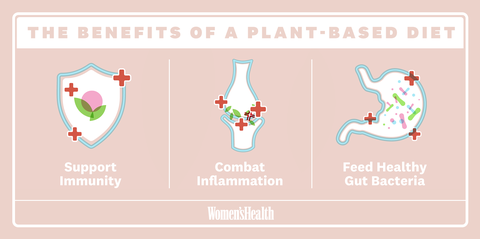
Women’s Health
Swapping plant protein for animal protein has benefits, too. “Regularly consuming foods high in plant protein versus animal protein can help prevent and reverse a slew of chronic conditions, including diabetes and heart disease,” says Joseph, who adds that the nutrients in plants help support healthy cholesterol, blood pressure, and blood sugar levels.
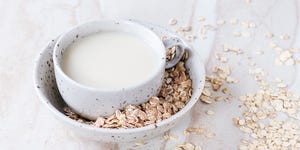
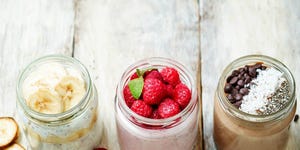

Another major reason people choose a plant-based eating style? Cutting back on animal products has significant environmental benefits. “Eating more plant foods reduces your carbon footprint since livestock production is responsible for a good portion of global greenhouse gas emissions,” says Joseph. Plus, “twenty servings of vegetables have fewer greenhouse emissions than one serving of meat, with beef and lamb having the highest emissions,” she says.
Others opt for a plant-based diet to help with weight loss, which could work for you if you keep your calories in check. Plant foods are high in filling fiber and low in calorie-dense saturated fats. But as Levitsky points out, the only way to lose weight is to consume fewer calories than you burn, often referred to as a calorie deficit. (Want to learn more? Sign up for Professor Levitsky’s class here.)
Yes, it’s possible to get enough nutrients from plants.
One common criticism of primarily plant-based diets is that it’s tough to get adequate nutrients—especially protein and omega-3s. Well, it’s totally doable. “You may just need to think outside of the box at times,” says Gorin.
“Think about how you can enhance your diet without focusing so much on taking things away.”
To maximize your protein, she recommends adding nutritional yeast to pasta in place of grated cheese, blending white beans or chickpeas into smoothies, and eating nuts and nut butters on their own or in various sweet and savory recipes. A wide scope is important here since plants contain incomplete proteins (while animal products contain complete proteins). Eating plant-based protein from several different sources will help ensure you’re getting all the amino acids you need to support healthy body functions.
Joseph says not to stress too much about getting enough protein, though. “It’s important to note that protein isn’t just found in meat,” she says.
Just be sure you’re eating plenty of these whole foods, as opposed to relying on processed foods for your calories.
Another thing to keep in mind if you’re eating a plant-based diet? Iron. “Your body absorbs heme iron, the type of iron found in animal products, more easily than it does plant-based iron like the iron found in spinach and tomato,” says Gorin. To aid the absorption of plant-based iron, she suggests pairing it with a source of vitamin C. Example: “Squeeze some lemon juice onto a green spinach salad.”
Eating a wide mix of plant-based foods is another simple way to help make sure you’re getting the nutrients you need. “Deficiencies rarely occur when you eat a variety of plants,” says Levitsky.
Gorin adds that taking supplements can be helpful on a plant-based diet.
But a plant-based diet isn’t always a healthy choice.
Plant-based eating is a safe and healthy choice for the majority of people, but you should always talk with your doctor or registered dietitian before making big changes to your diet.
In Joseph’s experience, she notes that “anyone with a history of eating disorder or disordered eating shouldn’t follow a diet that eliminates food groups, as a plant-based diet in the wrong hands can be abused as another restriction diet.”
If you fall into this category, you can experiment with plant-based recipes, but should probably steer clear of any strict food rules, restrictions, or labels on your eating habits.
If you’re new to plant-based eating, take things one step at a time.
“I always recommend starting small,” says Joseph. “Overturning your entire diet in a day is overwhelming and lessens the likelihood of you sticking with it. Instead of jumping to extremes, pick two small changes to implement each week.” She suggests swapping cow’s milk for an unsweetened dairy-free milk as a first step.
And, remember that a plant-based diet doesn’t mean you can never eat animal products. “Think about how you can enhance your diet without focusing so much on taking things away,” says Joseph. “Research suggests that following a flexitarian diet (increasing plant-based foods and reducing but not eliminating animal foods) yields similar health benefits like reduced risk of heart disease and diabetes.”
The Meatless Monday campaign is popular for a reason. Cutting out meat (and all animal products, if you choose) is relatively easy for one day of the week. According to Joseph, this alone can have a profound impact on the environment—and on your overall health.
Don’t know where to start? Here’s what a day of plant-based eating might look like:
Breakfast

HUMMUSAPIEN
Joseph loves adding chopped apple to vegan pancakes made with whole wheat flour for a satisfying and well-rounded breakfast.
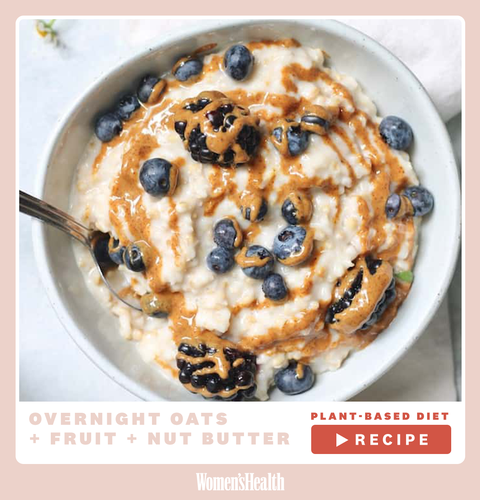
HUMMUSAPIEN
If you don’t have time for pancakes in the morning, Joseph recommends whipping up a batch of steel-cut overnight oats, which you boil for a few minutes on the stove and then store in the refrigerator overnight. (Standard oatmeal is a great choice, too!) In the morning, she stirs in some fruit and nut butter.
Lunch
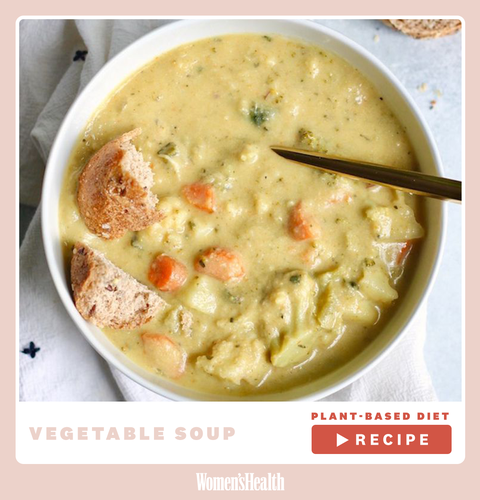
HUMMUSAPIEN
Want a re-heatable winter lunch option sans meat? It’s totally possible to make a hearty, meatless, dairy-free soup with potatoes, broccoli, cauliflower, non-dairy milk, and other tasty plant-based foods.
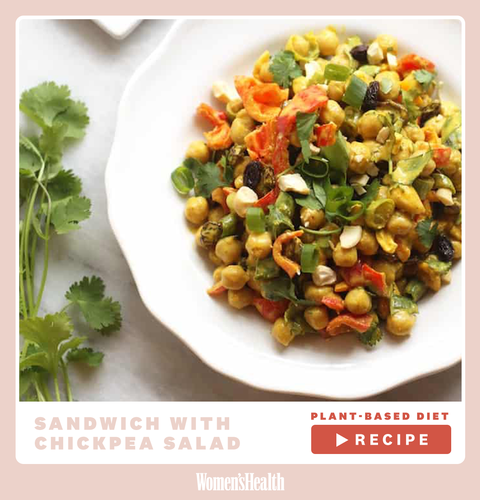
HUMMUSAPIEN
If soup isn’t your jam, try topping a filling a sandwich with greens and chickpea salad (instead of chicken or egg salad).
Snack

Getty Images
Gorin stresses the importance of both pulses and whole grains on a plant-based diet, since they contain filling fiber and protein. For an afternoon pick-me-up, pair 1/4 cup of hummus with a small toasted pita and a cup of raw veggies for dipping.
Dinner
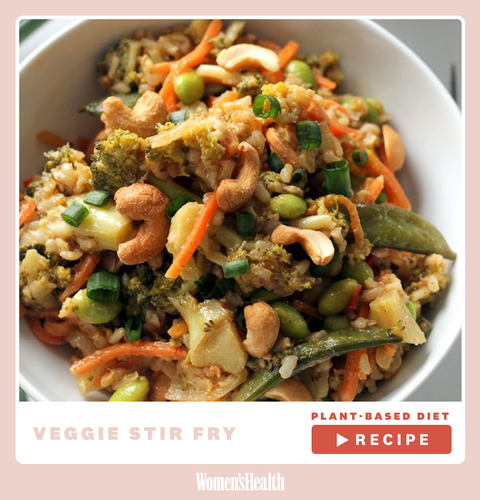
HUMMUSAPIEN
You don’t need beef or shrimp for a tasty stir-fry. Serve this easy vegetable dish over brown rice and you’ll have a satisfying dinner in under 30 minutes.
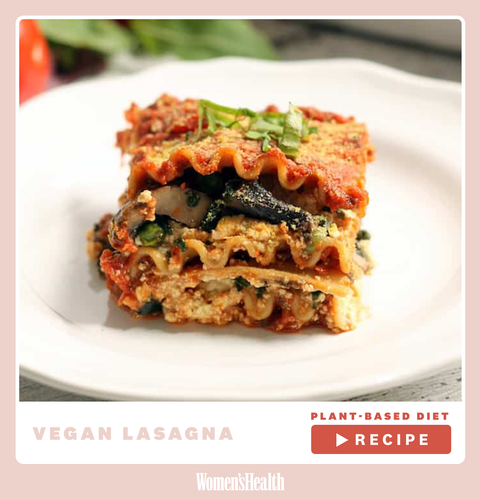
HUMMUSAPIEN
Dessert
If you need something a little more comforting, there’s always lasagna. The plant-based version of this carb-filled casserole gets its lasagna-ness from tofu ricotta, made with herbs, hummus, and nutritional yeast.

AMY GORIN NUTRITION
There are plenty of dairy-free ice cream options out there, but if you’re looking for a whole foods-based treat, banana soft serve is your best friend. Gorin loves blending frozen bananas with cocoa powder, and adding healthy toppings like nuts and shredded coconut.
Ready to shop? Here’s a grocery list that covers all the bases of a simple, plant-based diet:
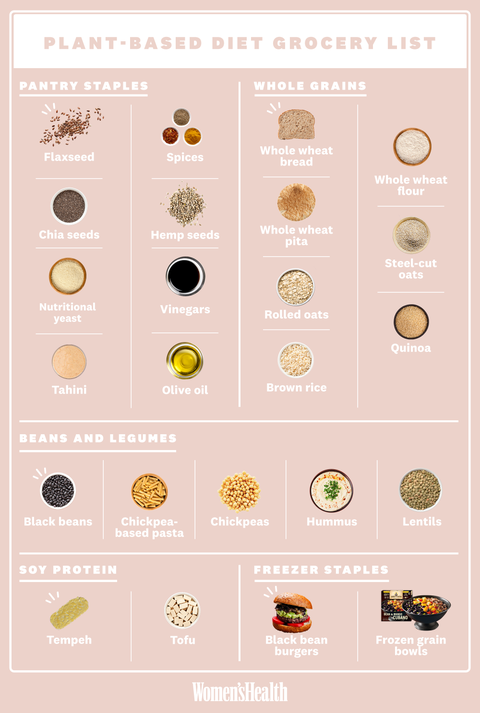
Women’s Health
Bottom line: Think of plant-based eating as a template that encourages more whole plant foods, instead of as a restrictive diet that makes things off limits.
Source: Read Full Article